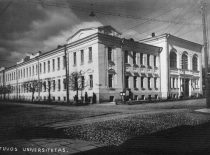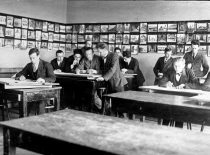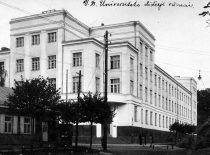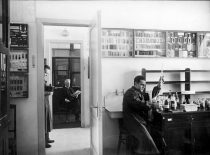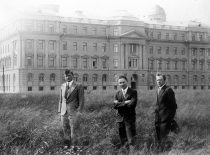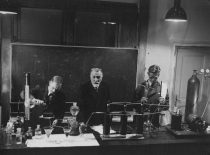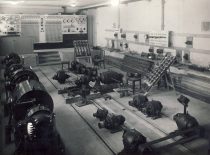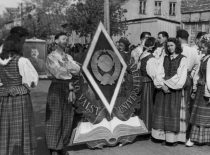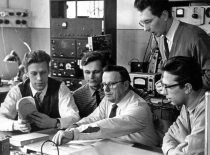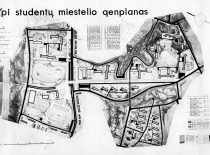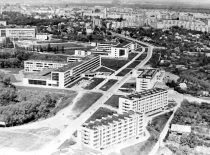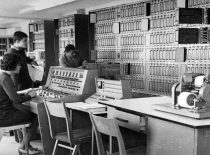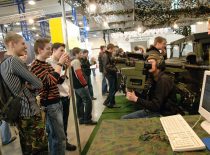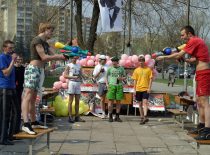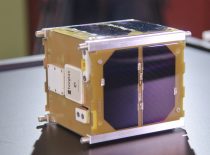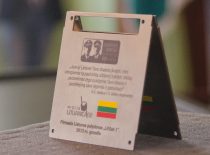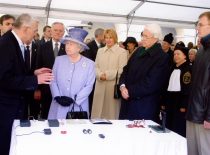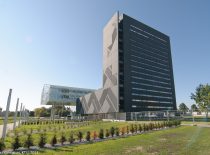Origin (1922–1950)
Kaunas University of Technology originates from the University of Lithuania that was established in Kaunas on 16 February 1922, after reorganisation of the Higher Courses established on 27 January 1920. The initiator and the first head of the Higher Courses was prof. Zigmas Žemaitis, who became the head of the Faculty of Mathematics and Natural Sciences later. In 1930 the Government of Lithuania named the University Vytautas Magnus University. The University consisted on the Faculty of Theology and Philosophy, Faculty of Humanities, Faculty of Law, Faculty of Medicine, Faculty of Mathematics and Natural Sciences, and Technical Faculty. Many well-known national figures worked at the University: President of the Republic of Lithuania Antanas Smetona, Prime Ministers Augustinas Voldemaras, Pranas Dovydaitis, Antanas Tumėnas and Leonas Bistras, seven signatories of the Act of Independence of 16 February 1918 and number of ministers. Pioneer of physical chemistry in Lithuania prof. Vincas Čepinskis and “father” of Lithuanian constitutional law prof. Mykolas Riomeris were Rectors of the University for several terms of office. During the Independence, there were 148 active student organisations at the University. Faculty of Humanities and Faculty of Law were transferred to Vilnius in 1940; it contributed to restoration of Vilnius University.
The University, as well as Lithuania, experienced painful consequences of occupations. When Soviet Union occupied Lithuania, on 21 August 1940 VDU was renamed Kaunas University, the Faculty of Theology and Philosophy was revoked, almost all student organisations were closed, it was the beginning of the repressions of lecturers and students. Rector prof. Antanas Purėnas tried to rescue lecturers and students from exile, but he could not do anything. In the end of June 1941, after the beginning of SSRS-Germany was, the university’s community expressed its firm opinion supporting the attempts to restore the statehood of Lithuania. A significant amount of the University’s students and lecturers actively participated in the uprising in Kaunas against the retreating occupational army of SSRS. The rebels rescued almost 2 000 prisoners and announced restoration of the independence. Later the Provisional Government restored the University’s name – Vytautas Magnus University, but soon the Provisional Government of Lithuania was dissolved by the occupants and Lithuania felt a heavy burden of occupation. Mobilisation to SS units, announced by Nazi Administration four times, failed in Lithuania, therefore, in retaliation, Nazi arrested lecturers and students of Vytautas Magnus University and Vilnius University on 16 March 1943; the studies were terminated in VDU and other Lithuanian higher education schools. Majority of the university’s buildings were occupied by German occupation army, therefore the lecturers were forced to give lectures semi-secretly in their homes or other institutions. Rector prof. Julijonas Gravrogkas attempted to save university and rescued students from being deported for work to Germany. The University was one of the centres of anti-Nazi resistance: anti-Nazi literature was distributed there; some lecturers and students participated in anti-Nazi resistance. Prof. Adolfas Damušis and prof. Juozas Vėbra were arrested by the Gestapo and were imprisoned in Germany.
In summer of 1944, with approaching army of the Soviet Union, almost one third of the members of academic community moved to the West. When Soviet Union repeatedly occupied Lithuania, formal meeting for restoration of the University took place on 23 October 1944 and on 13 November the name of Kaunas State Vytautas Magnus University was confirmed for the University. However, occupants did not like the spirit of nationality and freedom at the University. In the autumn of 1950 in the attempts of destruction of the source of national culture, SSRS Ministry of Higher Education decided to reorganise the University to Kaunas Polytechnic Institute and its Faculty of Medicine – to Kaunas Medical Institute.



